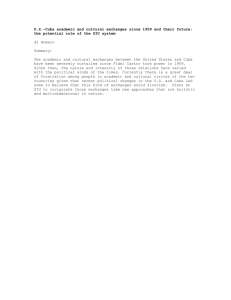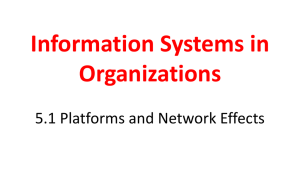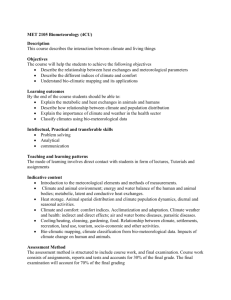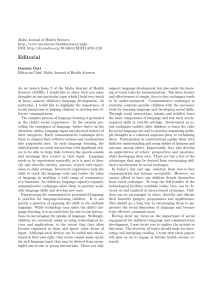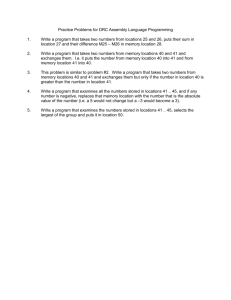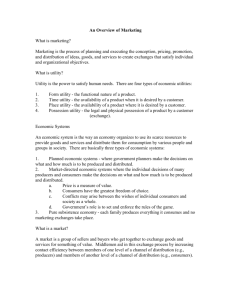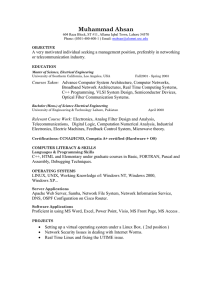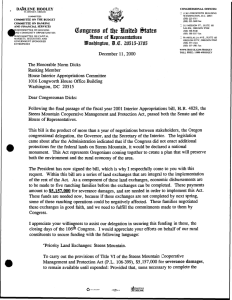Assessing Marketing's Critical Role in Organizational Performance
advertisement
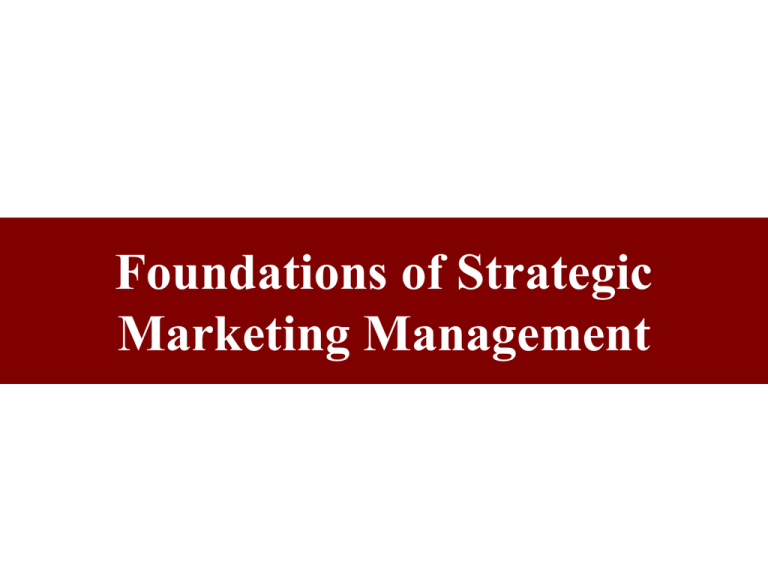
Foundations of Strategic Marketing Management “Marketing” Defined AMA Definition The process of planning and executing the conception, pricing, promotion, and distribution of ideas, goods, and services to create exchanges that will satisfy individual and organizational objectives. Needs, Wants, & Demands • Needs – involve a state of felt deprivation of some basic satisfaction. • Wants – are desires for specific satisfiers of needs. • Demands – are wants for specific products that are backed by an ability, willingness, & authorization to buy. Product • Anything offered for sale that that satisfies a need or want. • Can consist of goods, services, and/or ideas. Exchanges Exchange means obtaining a desired product by offering something desirable in return. Conditions Necessary for Exchanges to Occur • At least 2 parties. • Each has something valued by the other. • Each is capable of communication & delivery. • Each is free to accept or reject offer. • Each feels it is desirable/appropriate to deal with the other party. Markets A market consists of • all the potential customers • sharing a particular need or want, • who might be willing, able & authorized • to engage in exchanges. Company Orientations Toward the Marketplace • Production Concept • Product Concept • Sales (or Selling) Concept • Marketing Concept • Societal Marketing Concept Customers’ Viewpoint: What Does Marketing Provide? Utilities Possession Utility Minimum risk and shopping time. Place Utility Convenient Locations Time Utility Product is available when the customer needs it. Strategic Marketing Management Processes 1. Defining the organization’s business, mission, and goals 2. Identifying & framing organizational growth opportunities 3. Formulating product-market strategies 4. Budgeting marketing, financial, & production resources 5. Developing reformulation & recovery strategies Strategy • A fundamental pattern of –present and planned –objectives, resource deployments, and interactions of an organization with –markets, competitors, and other environmental factors. Business Definition, Mission & Goals • Business Definition – Essentially, determining what business an organization is in – MUST be defined from a customer or market perspective • Business Mission – Defines scope of operations and reflects management’s vision of what the organization seeks to do. • Business Goals – Desired levels of performance over specified time periods – Should be problem- or future-oriented. Identifying & Framing Growth Opportunities 3 Basic Questions: 1. What might we do? • Environmental opportunities 2. What do we do best? • Distinctive/core competencies 3. What must we do? • Basic requirements to compete successfully The SWOT Analysis INTERNAL Strengths Weaknesses EXTERNAL Opportunities Threats Hierarchy of Strategies Corporate Strategy Definition of the firm’s mission Business-Level Strategy Competencies & Number of Mkts Marketing (functional) Strategy Target Markets & Mktg Mix Types of Corporate Strategy Growth for Current Markets Growth for New Markets Consolidation Strategies Growth Strategies Current Markets • Market Penetration • Product Development • Vertical Integration New Markets • Market Development • Market Expansion • Diversification • Strategic Alliances Consolidation Strategies Retrenchment Pruning Divestment The Marketing Mix 1. Product Strategy • Kind of good, service, or idea 2. Communication Strategy • Promoting the product 3. Channel Strategy • Distributing the product 4. Price Strategy • Determining amount buyer will/should pay for the product
